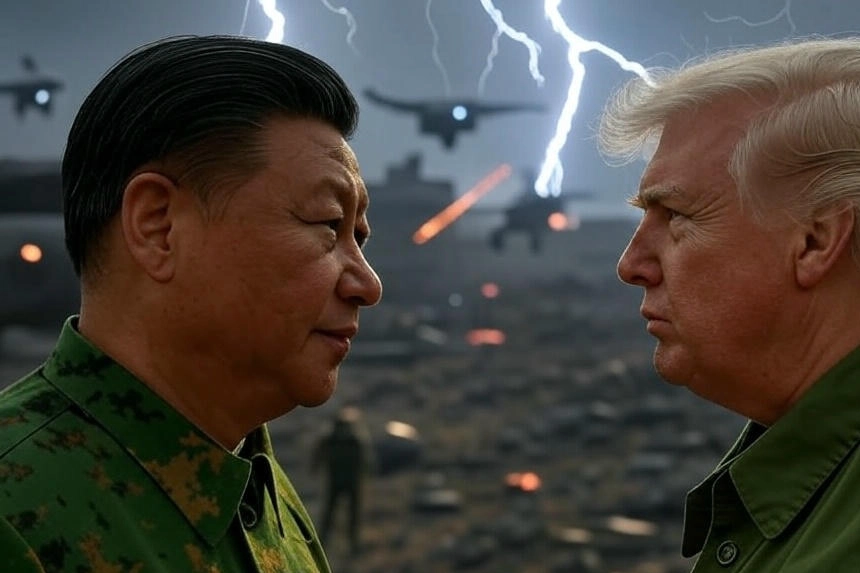After his recent move on Wednesday President Trump raised tariff on China from 104 per cent to 145 per cent, and even after imposing harsh trade conditions on the second largest economy and the second largest import supplier of the US, President Trump in his latest cabinet meeting declared that his would “love to” deal with Beijing.
This is the cumulative tariff above and over the tariffs imposed in his last term. Responding to the tariffs, China’s commerce ministry spokesperson He Yongjian said that the conditions imposed on the country are like blackmail, and it is ready to “follow till the end” if the US continues down the road. Further in the report, he emphasised that China is ready for talks, but only when it is mutual.
After Trump hiked the tariffs further, China retaliated against the US with 84 per cent tariffs. This has triggered a frenzy in the market, and as a result of the non-negotiable “tariff war”, the Chinese yuan fell to its lowest against the US dollar. In his latest move, Trump seems to be poised to bring the Asian nation down, as while he increased tariffs on China, the same has been halted for other countries.
Amidst this, Ursula Von der Leyen, chief of the European Commission, has relaxed measures to curb the high tariffs by the US, after the president shared a social media post informing that he has authorised a pause for 90 days and a lower tariff of up to 10 per cent on other countries. In the post, he also said that this includes India as the country has not “retaliated in any way, shape, or form” except for China, which seems to be the major target of Mr Trump.
However, it must be noted that only the reciprocal tariffs that were imposed on 86 countries from April 2 were lifted, leaving the 10 per cent base tariffs. An analyst close to Delhi has reported that Trump has been known for his inconsistent methods, but one thing that remains consistent is his affinity with tariffs due to his belief that the country that has a surplus will win. He further iterated that the president is least bothered by the world economic conditions, and while this may or may not be true, his current moves reflect this madness. There are possibilities for an escalating trade war between China and the US, but the 10 per cent tariff on other nations may still lead to a price rise. Another contention is the uncertainty that will begin after the 90-day pause ends.








